
Cephalocereus is a genus of slow-growing, columnar-shaped, blue-green cacti. The genus is native to Mexico.
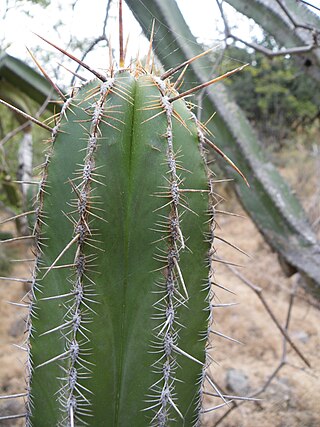
Escontria is a genus of cactus. The only species is Escontria chiotilla, the chiotilla or jiotilla.
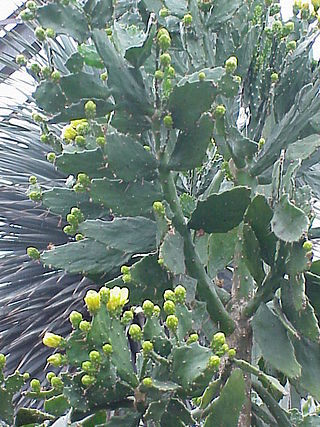
Brasiliopuntia is a genus in the cactus family, Cactaceae. It contains only one species, Brasiliopuntia brasiliensis.

Karl Moritz Schumann was a German botanist.

Arthrocereus glaziovii is a species of plant in the family Cactaceae. It is endemic to Brazil. Its natural habitat is rocky areas. It is threatened by habitat loss.

Cleistocactus hyalacanthus is a species of columnar cacti in the genus Cleistocactus. The name comes from the Greek kleistos meaning closed because the flowers hardly open.
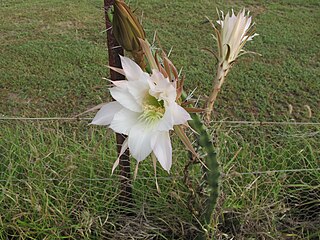
Harrisia pomanensis is a species of cactus.

Soehrensia thelegona is a species of cactus in the Soehrensia genus.

Acanthocalycium spiniflorum is a species of flowering plant in the cactus family Cactaceae from Argentina.
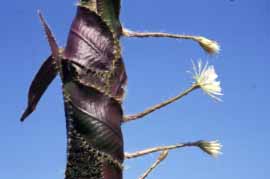
Strophocactus wittii, synonym Selenicereus wittii, known as the Amazon moonflower, is a species of plant in the genus Strophocactus in the cactus family (Cactaceae), and is one of several species commonly called "moonflowers". It was first described in 1900 and is one of three species of cactus found in the central Amazon basin.

Acanthocalycium rhodotrichum is a species of Acanthocalycium found in Argentina, Bolivia, Brazil, Paraguay, and Uruguay.

Xiquexique gounellei is a species of plant in the genus Xiquexique of the cactus family. Common names include "Alastrado", "Chique-Chique", "Xique-Xique" and "Xique-Xique das Pedras".

Cleistocactus laniceps is a species of columnar cacti in the genus Cleistocactus.
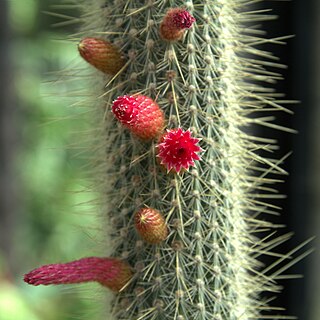
Cleistocactus parviflorus is a species of columnar cacti in the genus Cleistocactus.
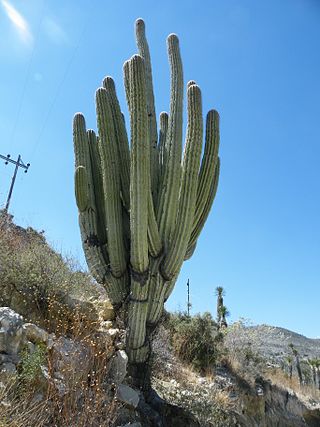
Cephalocereus fulviceps is a species of Cephalocereus from Mexico.
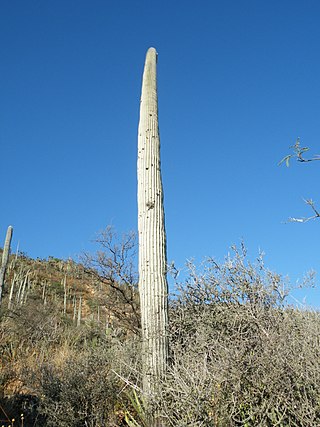
Cephalocereus columna-trajani is a species of cactus from Mexico.

Cephalocereus mezcalaensis is a species of Cephalocereus from Mexico.

Cephalocereus tetetzo is a species of cactus from Mexico.
Cephalocereus apicicephalium is a species of cactus from Mexico.

Cephalocereus polylophus is a species of cactus endemic to Mexico. Often grown under the synonym Neobuxbaumia polylopha, it is popular with cactus growers and reproduces well in cultivation.
























